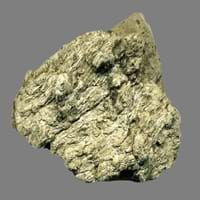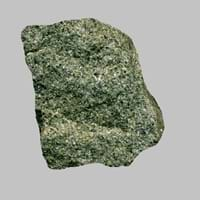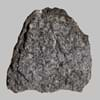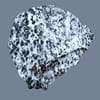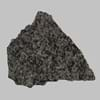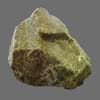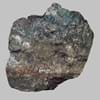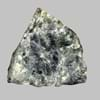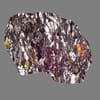Definition
Dacite is a volcanic igneous rock which is rintermediate in composition between andesite and rhyolite
Greywacke is defined as a dark coarse-grained sandstone rock which contains more than 15 per cent clay
Origin
Romania and Moldova, Europe
Unknown
Discoverer
Unknown
Unknown
Etymology
From Dacia, a province of the Roman Empire which lay between the Danube River and Carpathian Mountains where the rock was first described
From German Grauwacke, from grau grey + wacke
Class
Igneous Rocks
Sedimentary Rocks
Sub-Class
Durable Rock, Soft Rock
Durable Rock, Hard Rock
Group
Volcanic
Not Applicable
Other Categories
Fine Grained Rock, Medium Grained Rock, Opaque Rock
Fine Grained Rock, Opaque Rock
Texture
Aphanitic to Porphyritic
Clastic
Color
Bluish - Grey, Brown, Grey, Light to Dark Grey
Beige, Black, Brown, Colourless, Cream, Dark Brown, Green, Grey, Light Green, Light to Dark Grey, Pink, Red, White, Yellow
Durability
Durable
Durable
Appearance
Vesicular
Dull
Interior Uses
Decorative Aggregates, Entryways, Interior Decoration
Decorative Aggregates, Floor Tiles, Flooring, Homes, Interior Decoration
Exterior Uses
As Building Stone, Paving Stone, Garden Decoration
As Building Stone, As Facing Stone, Garden Decoration, Office Buildings, Paving Stone
Other Architectural Uses
Curbing
Curbing, Whetstones
Construction Industry
As Dimension Stone, Construction Aggregate, for Road Aggregate, Landscaping
Building houses or walls, Cement Manufacture, Construction Aggregate, for Road Aggregate, Raw material for the manufacture of mortar
Medical Industry
Not Yet Used
Not Yet Used
Antiquity Uses
Artifacts
Artifacts, Sculpture, Small Figurines
Commercial Uses
Commemorative Tablets, Creating Artwork
As armour rock for sea walls, Petroleum reservoirs, Sea Defence, Tombstones
Types
Footwall Dacite, Hanging wall Dacite, Tuff and Biotite Dacite
Not Available
Features
Host Rock for Lead, Is one of the oldest rock
Available in Lots of Colors and Patterns, Generally rough to touch, Non-vesicular, Veined
Archaeological Significance
Monuments
Not Yet Used
Not Yet Used
Famous Monuments
Not Applicable
Not Applicable
Sculpture
Not Yet Used
Used
Famous Sculptures
Not Applicable
Data Not Available
Pictographs
Used
Not Used
Petroglyphs
Used
Not Used
Figurines
Not Yet Used
Used
Formation
Dacitic magma is formed by the subduction of young oceanic crust under a thick felsic continental plate. Further, the Oceanic crust is hydrothermally altered as quartz and sodium are added.
Graywacke rock is a type of sedimentary rock, which is also known as immature sandstone, which is indurated, dark grey and consisting of poorly sorted angular to sub-angular, sand-sized grains.
Mineral Content
Amphibole, Apatite, Biotite, Feldspar, Garnet, Hornblade, Magnetite, Plagioclase, Pyroxene, Quartz, Zircon
Augite, Biotite, Calcite, Chlorite, Clay, Clay Minerals, Feldspar, Micas, Muscovite or Illite, Plagioclase, Pyroxene, Quartz
Compound Content
Ca, Fe, Potassium Oxide, Mg, Potassium, Silicon Dioxide
Aluminium Oxide, NaCl, CaO, Chromium(III) Oxide, Iron(III) Oxide, FeO, Potassium Oxide, Magnesium Carbonate, MgO, MnO, Sodium Oxide, Phosphorus Pentoxide, Silicon Dioxide, Titanium Dioxide
Types of Metamorphism
Burial Metamorphism, Cataclastic Metamorphism
Not Applicable
Types of Weathering
Biological Weathering, Chemical Weathering, Mechanical Weathering
Biological Weathering, Chemical Weathering
Types of Erosion
Chemical Erosion
Coastal Erosion, Sea Erosion, Wind Erosion
Grain Size
Medium to Fine Coarse Grained
Angular and Fine
Fracture
Conchoidal
Conchoidal
Porosity
Less Porous
Highly Porous
Luster
Subvitreous to Dull
Dull
Toughness
Not Available
2.6
Specific Gravity
2.86-2.87
2.2-2.8
Transparency
Translucent
Opaque
Density
2.77-2.771 g/cm3
2.6-2.61 g/cm3
Specific Heat Capacity
Not Available
Resistance
Heat Resistant, Impact Resistant, Pressure Resistant, Wear Resistant
Heat Resistant, Impact Resistant, Pressure Resistant
Deposits in Eastern Continents
Asia
Not Yet Found
China, India, Kazakhstan, Mongolia, Russia, Uzbekistan
Africa
Not Yet Found
Namibia, Nigeria, South Africa
Europe
France, Greece, Romania, Scotland, Spain
Austria, Denmark, Germany, Great Britain, Netherlands, Norway, Poland, Sweden, Switzerland, United Kingdom
Others
Not Yet Found
Greenland
Deposits in Western Continents
North America
USA
Canada, USA
South America
Argentina, Bolivia, Chile, Colombia, Ecuador, Peru, Venezuela
Brazil
Deposits in Oceania Continent
Australia
New Zealand, South Australia, Western Australia
New South Wales, New Zealand
All about Dacite and Greywacke Properties
Know all about Dacite and Greywacke properties here. All properties of rocks are important as they define the type of rock and its application. Dacite belongs to Igneous Rocks while Greywacke belongs to Sedimentary Rocks.Texture of Dacite is Aphanitic to Porphyritic whereas that of Greywacke is Clastic. Dacite appears Vesicular and Greywacke appears Dull. The luster of Dacite is subvitreous to dull while that of Greywacke is dull. Dacite is available in bluish - grey, brown, grey, light to dark grey colors whereas Greywacke is available in beige, black, brown, colourless, cream, dark brown, green, grey, light green, light to dark grey, pink, red, white, yellow colors. The commercial uses of Dacite are commemorative tablets, creating artwork and that of Greywacke are as armour rock for sea walls, petroleum reservoirs, sea defence, tombstones.
